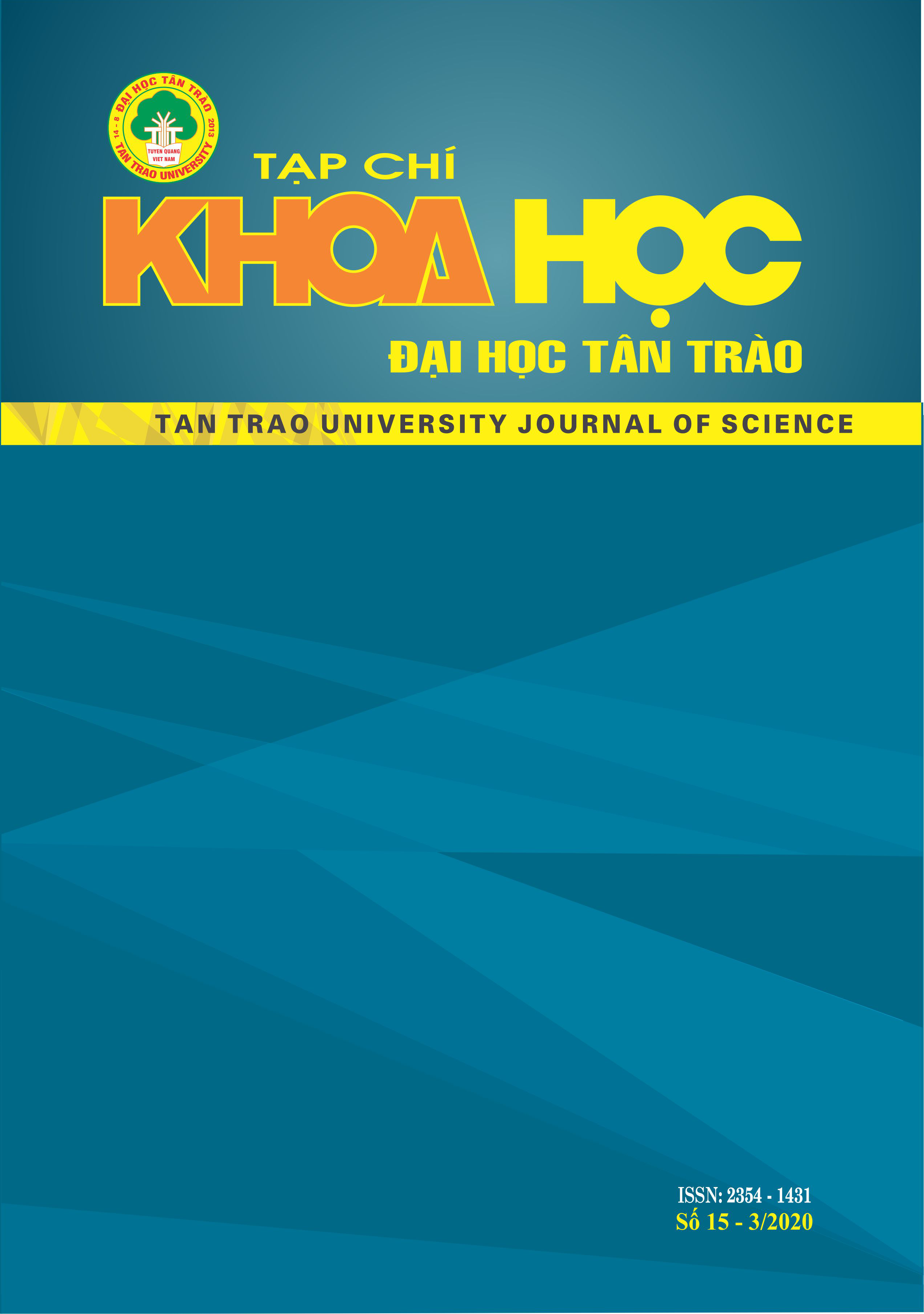Giải pháp nâng cao hiệu quả rèn kỹ năng mềm cho sinh viên các trường đại học
DOI:
https://doi.org/10.51453/2354-1431/2020/337Từ khóa:
Kỹ năng má»m; phát triển kỹ năng má»m cho sinh viên; biện pháp rèn kỹ năng má»m.Tóm tắt
Rèn kỹ năng mềm cho sinh viên là một yêu cầu khách quan đang được quan tâm nhằm nâng cao chất lượng đào tạo, đáp ứng nhu cầu thị trường lao động. Bài viết
đề cập tới một số khái niệm có liên quan tới kỹ năng mềm, vai trò và biện pháp nâng cao hiệu quả rèn kỹ năng mềm cho sinh viên các trường đại học.
Tải xuống
Tài liệu tham khảo
Nguyễn Thị Mỹ Lộc, Đinh Thị Kim Thoa (2012), Hoạt động giáo dục giá trị sống và kỹ năng sống cho học sinh trung học, Tài liệu tập huấn/bồi dưỡng giáo
viên của Bộ GD&ĐT tập 1, trang 8, Hà Nội.
Huỳnh Văn Sơn (2009), Nhập môn kĩ năng sống, NXB Giáo dục Việt Nam, Hà Nội, trang 12-13.
Tạ Quang Thảo (2014), Phát triển kỹ năng mềm cho sinh viên các trường đại học, cao đẳng đáp ứng yêu cầu của thị trường lao động trong giai đoạn hiện nay, Tạp chí giáo dục, số 329 kì 01, trang 27, 28, 29, tháng 3/2014.
Alex K. (2010), Soft skills: Knowing yourself & Know the World, New Delhi: S. Chnd. & Company Ltd, page 36, 2010.
Greenberg A. D. & Nilssen A.H. (2015), The role of education in building soft skills, Wain house Research, LLC, page 28, 2015.
Radhika Ch (2013), Soft skills - A buzz word in the new millennium, Indian Streams Research Journal, Volume 3, Issue 7, ISSN 2230-7850, page 25, 2013.
Rani S (2010), Need and importance of soft skills in students, Sri Sarada College for Women, Salem - 636016, page 55, 2010.
Tải xuống
Đã Xuất bản
Cách trích dẫn
Số
Chuyên mục
Giấy phép

Tác phẩm này được cấp phép theo Giấy phép Quốc tế Creative Commons Attribution-ShareAlike 4.0 .
Bài báo được xuất bản ở Tạp chí Khoa học Đại học Tân Trào được cấp phép theo giấy phép Ghi công - Chia sẻ tương tự 4.0 Quốc tế (CC BY-SA). Theo đó, các tác giả khác có thể sao chép, chuyển đổi hay phân phối lại các bài báo này với mục đích hợp pháp trên mọi phương tiện, với điều kiện họ trích dẫn tác giả, Tạp chí Khoa học Đại học Tân Trào và đường link đến bản quyền; nêu rõ các thay đổi đã thực hiện và các nghiên cứu đăng lại được tiến hành theo cùng một bản quyền.
Bản quyền bài báo thuộc về các tác giả, không hạn chế số lượng. Tạp chí Khoa học Tân Trào được cấp giấy phép không độc quyền để xuất bản bài báo với tư cách nhà xuất bản nguồn, kèm theo quyền thương mại để in các bài báo cung cấp cho các thư viện và cá nhân.
Mặc dù các điều khoản của giấy phép CC BY-SA không dành cho các tác giả (với tư cách là người giữ bản quyền của bài báo, họ không bị hạn chế về quyền hạn), khi gửi bài tới Tạp chí Khoa học Đại học Tân Trào, tác giả cần đáp ứng quyền của độc giả, và cần cấp quyền cho bên thứ 3 sử dụng bài báo của họ trong phạm vi của giấy phép.






